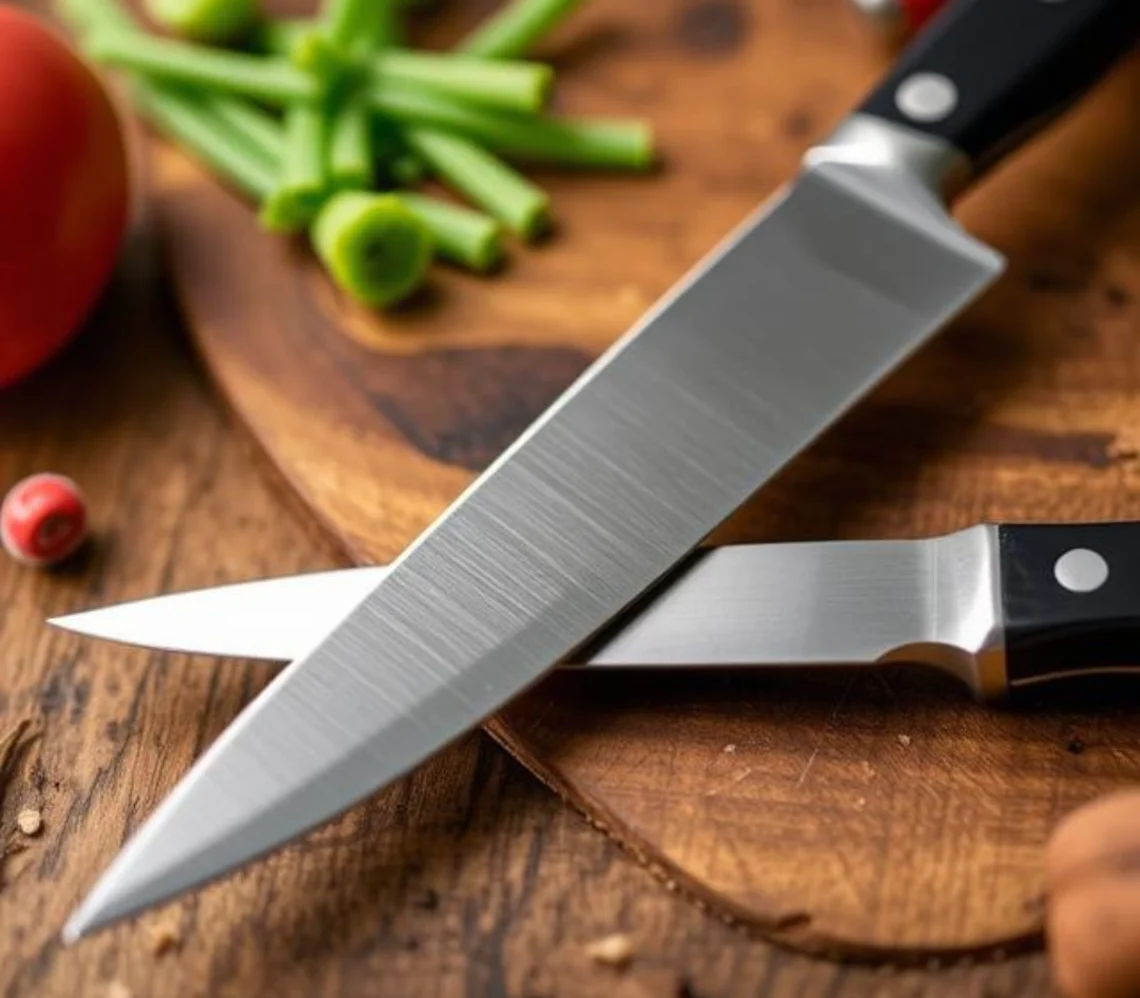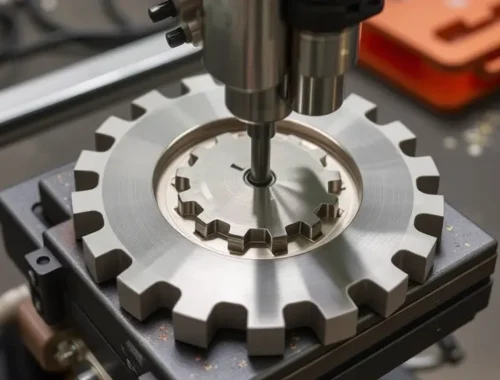
How Do You Properly Sharpen a Knife for Long-Lasting Sharpness?
Table of Contents
ToggleThe Ultimate Guide to Knife Sharpening: Tips, Mistakes, and Maintenance
Doesn’t matter whether you think from casual life usage or kitchen usage, a knife is a must-have tool. Without it, you can’t make your day or perform multiple tasks related to cutting or chopping. However, the major task is to keep its blades sharpened for long-lasting usage.
Are you looking for some assistance in this regard? You have come to the right spot as this blog will help you learn the step-by-step guide on how you can properly sharpen a knife without impacting its blades.
You will love to read:- How can the best gear shaper cutter reduce downtime?
Why Keeping Your Knife Sharp Is Important?
Many people believe that a sharp knife is dangerous, but in reality, a dull knife poses a greater risk. Here’s why keeping your knife sharp is essential:
- Safety: A dull knife requires more force to cut, increasing the likelihood of slipping and causing serious injuries. A sharp knife ensures better control and reduces accidents.
- Efficiency: A sharp knife allows for cleaner, more precise cuts, making food preparation quicker and easier. Whether you’re slicing vegetables or cutting meat, a sharp blade improves performance.
- Longevity: Regular sharpening prevents excessive wear and tear, helping your knife maintain its edge and last longer. Proper maintenance saves you money by reducing the need for frequent replacements.
- Better Cooking Experience: A well-sharpened knife enhances your cooking skills, making meal prep more enjoyable and professional.
Now, let’s explore how to properly sharpen your knife step by step.
How to Sharpen the Knives Effectively?
While searching on the internet, you will find multiple techniques, steps, and methods to follow for sharpening the knives. It makes understanding difficult for those who don’t know about this method and struggling to learn the right steps.
In the following section, we have shared the most useful steps that you have to take into account while sharpening your knives. You should keep them in mind and follow with great care for effective results.
Choose the Right Equipment
The very first step you should take for sharpening your knife is the selection of the right equipment. You can find multiple materials or equipment from the market for this purpose. A knife can be sharpened using a stone, sandpaper, and honing rod.
It all depends on which equipment you choose for the effective sharpness. However, it also depends on the material with which your knife is made as well as its style. For example, if you are using a fixed blade Damascus knife and looking to sharpen it, you have to consider its material for the selection of the equipment.
Find & Use the Right Angle
Once you are done with the equipment selection, the process of finding the sharpening angle comes into the field. You have to sharpen the knife with the right angle and follow the steps carefully for effective sharpness.
This process is directly connected with the equipment you are using for this task. Despite this, it also depends on the degree of sharpness you want to get from your knife. So, it is recommended to keep these expected outcomes in mind while choosing the angle for sharpening your knife.
Hone the Edges
Despite focusing on angle only, you should also focus on honing your knife’s edges. For this purpose, the best equipment you can use is the honing rod. Also, you should focus on creating the sharp edge as per your needs to get the expected sharpness for using the knife effortlessly.
You can also use the other sharpening object if your knife is made of pure steel. The reason is this type of knife can be sharpened properly with the help of sandpaper.
Refine & Use
Keep in mind that you shouldn’t start using your knife just after honing it. The process of refining the blade is compulsory because it enables you to cut the materials properly without facing complications. So, you should focus on refining the blade before using it after honing it.
For this purpose, you must use the right material and technique. If you are refining the knife with your hands, it is recommended to wear gloves and take other necessary precautions. It will help you easily make your knife ready for usage without getting hurt to your body.
Common Knife Sharpening Mistakes to Avoid
1. Using the Wrong Angle
Each knife has an ideal sharpening angle (typically 15–20 degrees). Inconsistent angles result in uneven edges, reducing the knife’s effectiveness.
2. Applying Too Much Pressure
Excessive force can damage the blade rather than refine it. Light, controlled strokes ensure a sharper and longer-lasting edge.
3. Choosing the Wrong Sharpening Tool
Whetstones, honing rods, and electric sharpeners serve different purposes. Using an inappropriate tool can wear down the blade prematurely.
4. Skipping Lubrication
When using a whetstone, failing to apply water or oil increases friction, leading to an uneven and ineffective edge.
5. Neglecting to Hone the Knife
Sharpening creates a sharp edge, but honing keeps it aligned. Skipping this step reduces cutting efficiency and dulls the blade faster.
Avoid these mistakes to maintain sharp, efficient, and long-lasting knives.
How to Maintain a Sharp Knife Longer?
Once you’ve sharpened your knife, follow these tips to maintain its sharpness:
- Use a Cutting Board: Avoid cutting on hard surfaces like glass or metal.
- Store Properly: Use a knife block, magnetic strip, or sheath to protect the blade.
- Hand Wash Only: Dishwashers can damage the blade.
- Hone Regularly: Use a honing rod before or after each use.
When Should You Sharpen Your Knife?
How often you sharpen your knife depends on usage:
- Daily Use (Chefs, Butchers) – Sharpen every 1-2 weeks.
- Home Cooking (Occasional Use) – Sharpen every 2-3 months.
- Outdoor & Utility Knives – Sharpen as needed.
If your knife struggles to cut soft foods like tomatoes, it’s time to sharpen it.
Where to Find the Best Knives with Extra Sharpness & Long-lasting?
So far, you have read the steps to follow to sharpen the knives with effective outcomes. However, you must be looking to get a knife with extra sharpness and long-lasting to use for a long time without facing complications or focus on repairing.
If you are looking for an effective platform, you must browse White Hills Knives. It is a unique store from where you can find premium quality knives at affordable prices. From Damascus knives to hunting knives and other tools, you will find a variety of knives from this platform.
The best facility of this platform is the durability of the products because of the premium quality material usage. You can easily keep using the knife for a long time without focusing on repairing the knife.
Final Verdict
By reading this blog, you must have learned the method to follow for sharpening the knife for long-lasting usage. We have shared the steps that have been found effective for getting the expected results. You can easily follow these steps for sharpening your knife and using it for a long time.
For finding top-notch knives, we recommend you browse White Hills Knives. This effective selling platform enables you to buy your required products without investing a lot because of the affordable pricing.
FAQs
What do professionals use to sharpen their knives?
Professionals sharpen their blades using whetstones with a grit of 400–6000. How are knives sharpened by chefs? The majority of cooks sharpen their knives using whetstones.
How do chefs get their knives so sharp?
Professional cooks maintain their blades using a variety of tools, including electric sharpeners, honing rods, and whetstones. Gaining knowledge of the many kinds of chef knives and their applications improves your cooking abilities even more.
What makes a knife the sharpest?
Angle of the Edge: The blade’s longevity and sharpness are directly impacted by the angle at which it is honed. For precise activities like slicing fruits and vegetables, a narrower angle—between 15 and 20 degrees—produces a sharper edge.
Why do sharp knives cut easily?
A sharp knife can cut objects more easily compared to a blunt knife because a sharp knife applies more pressure on the object. A sharp-edged knife cuts more easily than a spoon even on the application of a greater force.
You May Also Like

white stones for landscaping
8 February 2024
How can the best gear shaper cutter reduce downtime?
25 January 2025

